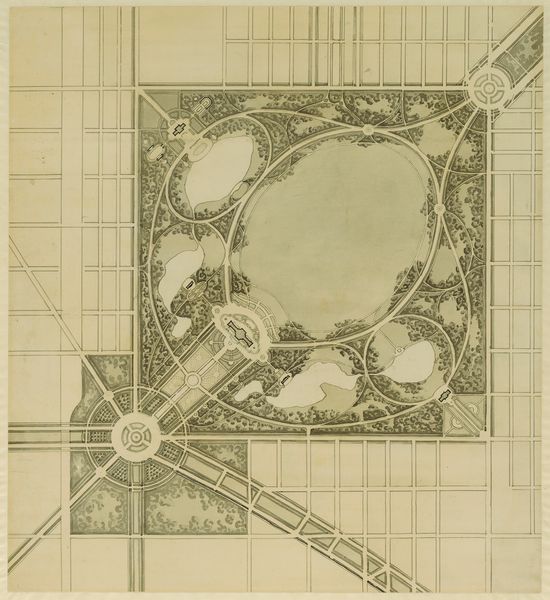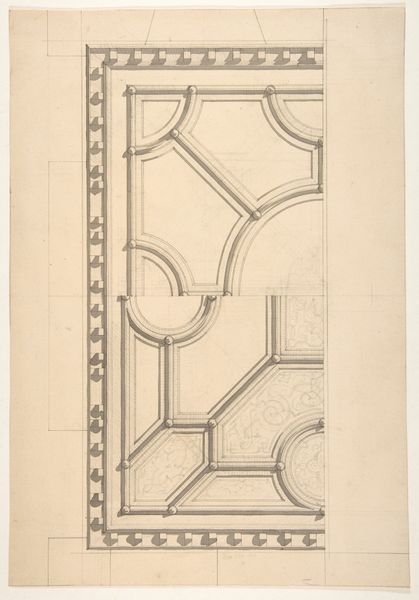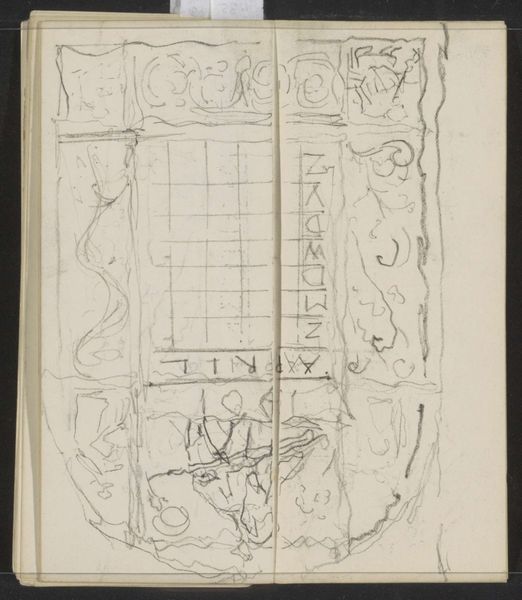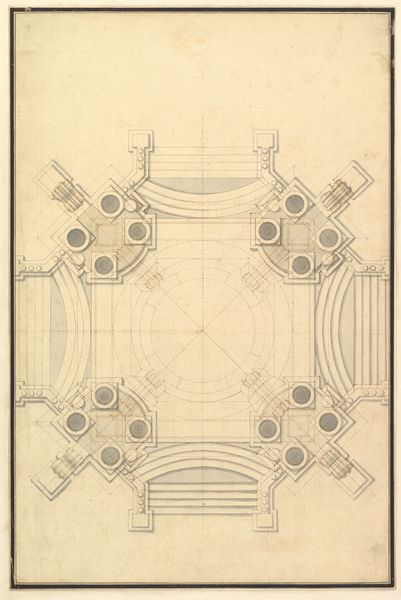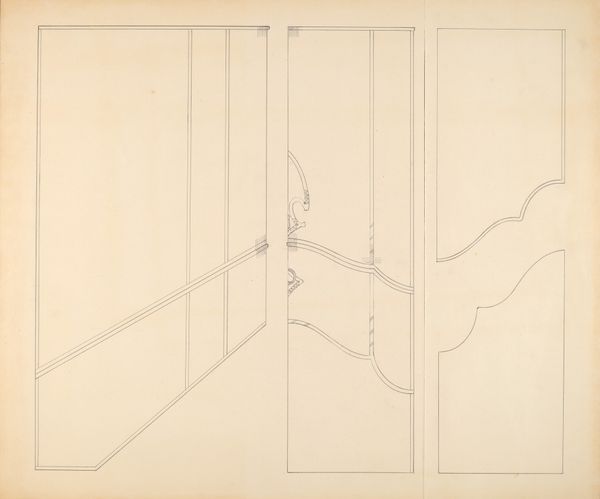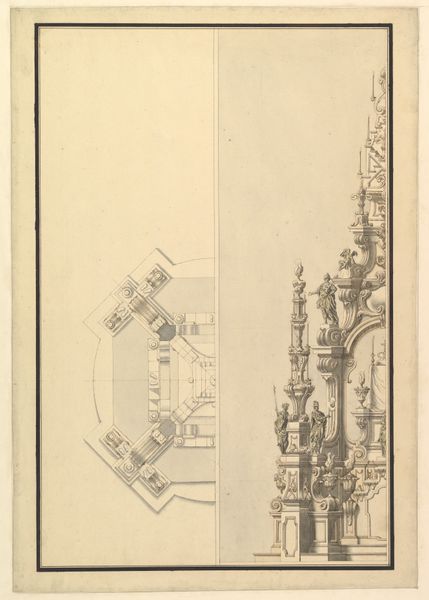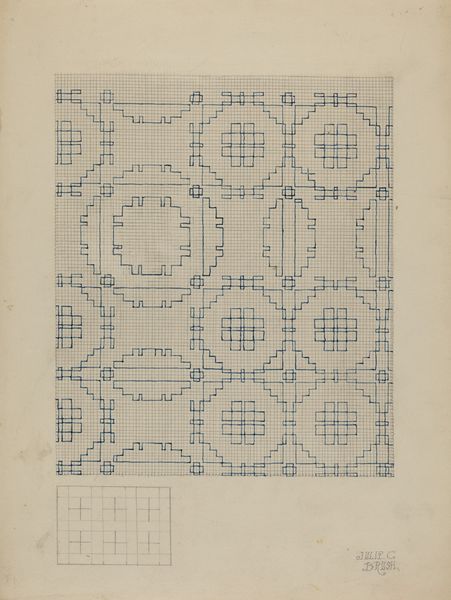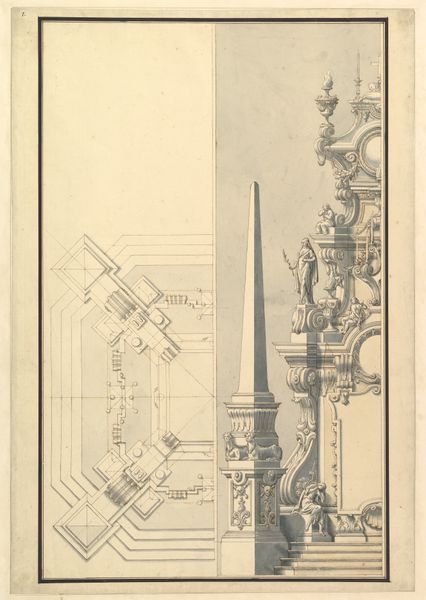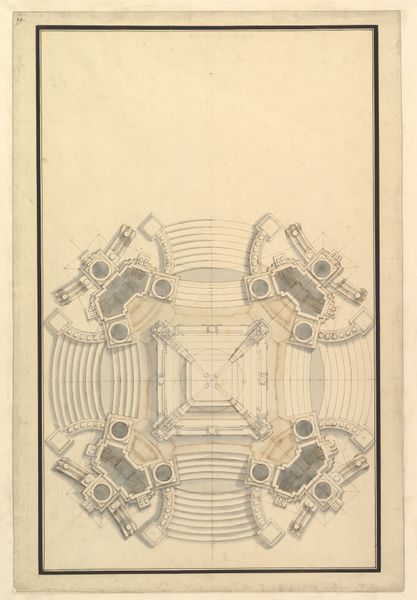
Plan of Chicago, Plate 63, Plan of a Proposed Park 1909
0:00
0:00
drawing, lithograph, print, paper, ink, architecture
#
drawing
#
lithograph
# print
#
etching
#
paper
#
ink
#
geometric
#
architectural drawing
#
park
#
cityscape
#
street
#
architecture
Dimensions: 37.7 × 45.4 cm (14 3/4 × 18 in.)
Copyright: Public Domain
Editor: This is Plate 63, “Plan of a Proposed Park,” from Daniel Burnham’s 1909 *Plan of Chicago*, rendered in ink and lithograph. It’s incredible to see the detail! The geometric precision mixed with the organic shapes of the park itself… what can you tell me about it? Curator: What strikes me immediately is the social vision embedded in this urban design. Burnham's plan wasn’t just about aesthetics; it was a blueprint for social reform. Consider the City Beautiful movement: It posited that grand, beautiful public spaces could inspire civic virtue and social harmony. Do you see how the park is interwoven with the street grid? Editor: Yes, it’s carefully integrated with the urban layout around it. It's not just a green space but almost a structural part of the city. Curator: Precisely. Now think about who such plans were *for*. While the rhetoric focused on benefitting all citizens, access to these planned environments was often shaped by social class and race. These were implicitly, and sometimes explicitly, designed to promote certain types of social interaction and behavior. It’s also critical to consider how such grand schemes could potentially displace existing communities, subtly or overtly prioritizing certain demographics over others. Does the plan appear to equally benefit all? Editor: I see what you mean. It's a beautiful design, but looking at it through a historical lens makes me consider those power dynamics… who gets to enjoy this space, and at what cost? I hadn’t thought of that initially. Curator: These urban plans are cultural artifacts, not merely infrastructural designs. Burnham’s plan demonstrates the intertwined relationship between urban planning, social engineering, and the politics of public space. These visions are a window into the values and ideologies of a particular historical moment. Editor: It’s really fascinating how a park design can reflect such broad cultural forces. Thanks for opening my eyes to these social and historical implications!
Comments
No comments
Be the first to comment and join the conversation on the ultimate creative platform.
